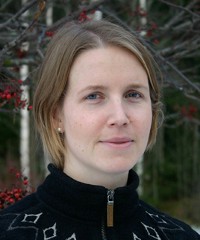The future of Swedish forests in a global perspective
Introduction
In the future, competition for wood as a renewable raw material and source of energy is likely to increase the pressure on forests. Sustainable forest management practices will be essential to safeguard biodiversity and ecosystem services other than wood production. Further, to support sustainable as well as efficient utilization of the forest resources, outlook studies linking analysis on the national, European, and global level are needed. The Swedish research program Future Forests has initiated collaboration with IIASA on a project exploring how alternative Swedish forest management strategies would affect the output of forest ecosystem services and the position of the Swedish forest sector in Europe and globally. Another aim is to assess how the Swedish forest sector may be affected by global trends.
Methodology
In the Future Forests outlook project, IIASA’s models GLOBIOM and G4M are being combined with the Swedish Heureka system to build scenarios projecting forest and market developments. GLOBIOM is a global recursive dynamic partial equilibrium model integrating the agricultural, bioenergy, and forestry sectors for analyzing land use competition between these major land-based production sectors. G4M is a global forestry model which simulates forest growth and management to provide information on potential harvest of wood, harvesting costs, and forest carbon stock. The Heureka decision support system projects forest development and output of forest products and services on the stand, landscape, regional, and national level. By linking these models, scenarios consistent with the IPCC Shared Socioeconomic Pathways (SSPs) will be created for a set of alternative Swedish forest management strategies. These strategies will be defined to cover some quite extreme developments, including i) business-as-usual forestry (as a baseline), ii) intensified forestry on large areas, and iii) large areas of nature reserves with no commercial forestry.
Some preliminary conclusions
As the Future Forests outlook project is running from 2013 to 2015, no concluding results are yet available. During 2012, pilot studies were carried out to calibrate the models and test run scenarios. These pilot studies indicate that the management strategies lead to quite different effects on the Swedish forest sector, biodiversity, and the output of forest ecosystem services, such as carbon sequestration. Existing global scenarios developed in collaboration with the World Wide Fund for Nature (WFF) for the Living Forests Report were also analyzed, focusing on the effects of bioenergy extraction on forests and land-use change. These show that there may be various regional effects that need to be investigated further [1]. In the outlook project, the systems perspective will make it possible to study the direct effects more closely, in order to identify potential indirect effects outside Sweden as well as to assess trade-offs.
References
[1] Kraxner F, Nordström E-M, Havlík P, et al. (2013) Global bioenergy scenarios – Future forest development, land-use implications and trade-offs. Biomass & Bioenergy 57: 86-96.
Note
Eva-Maria Nordström is a Swedish citizen working in the Ecosystems Services and Management (ESM) Program. Her postdoctoral funding is from the Kempe Scholarship Fund.
Further information


